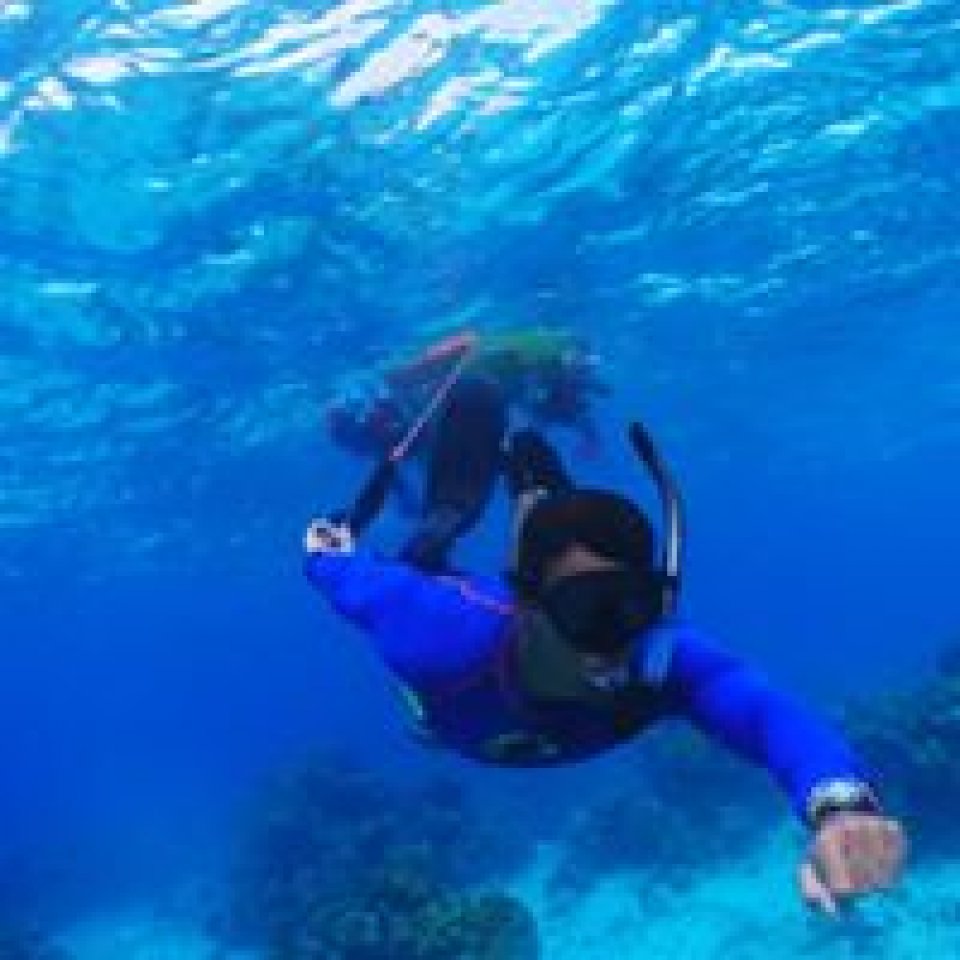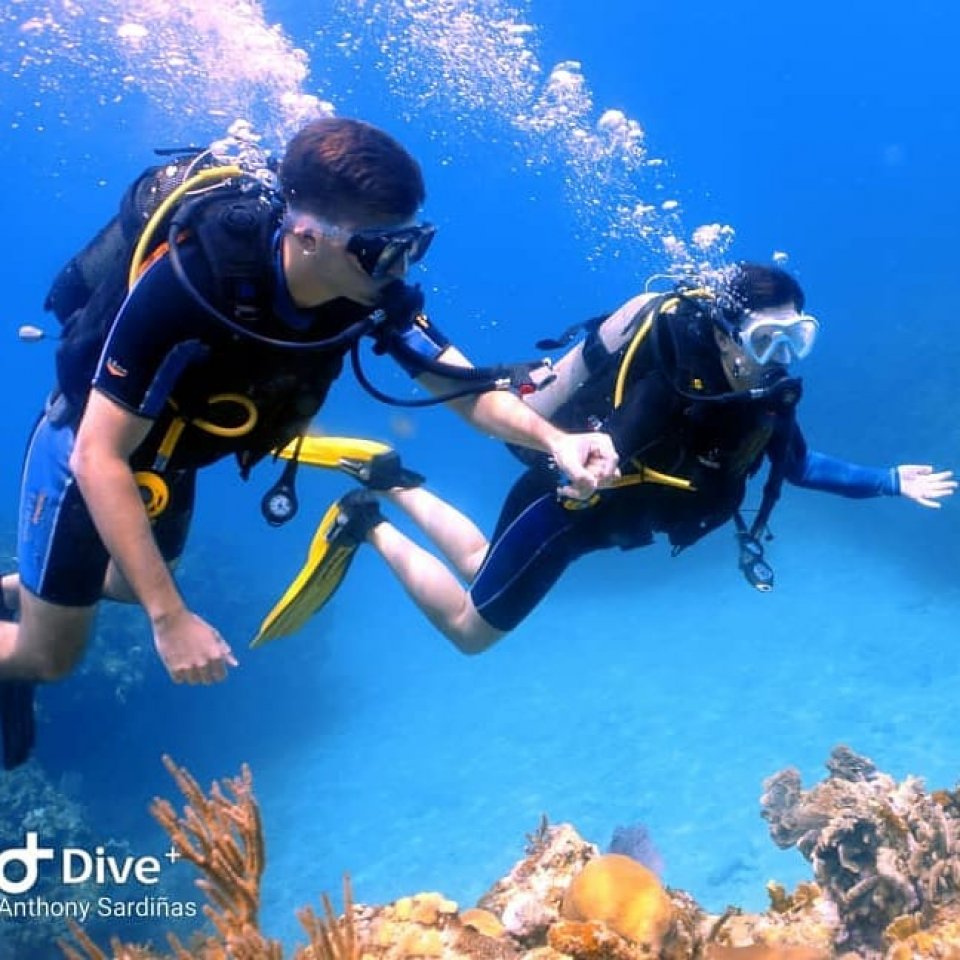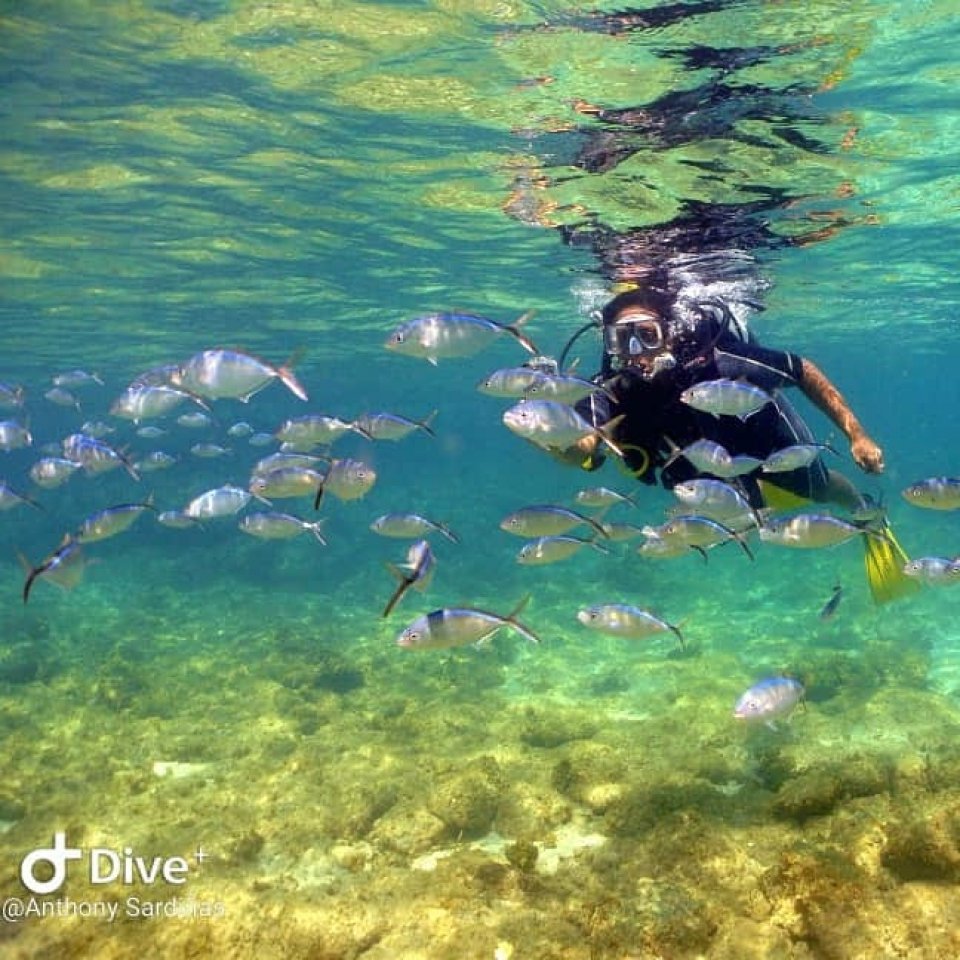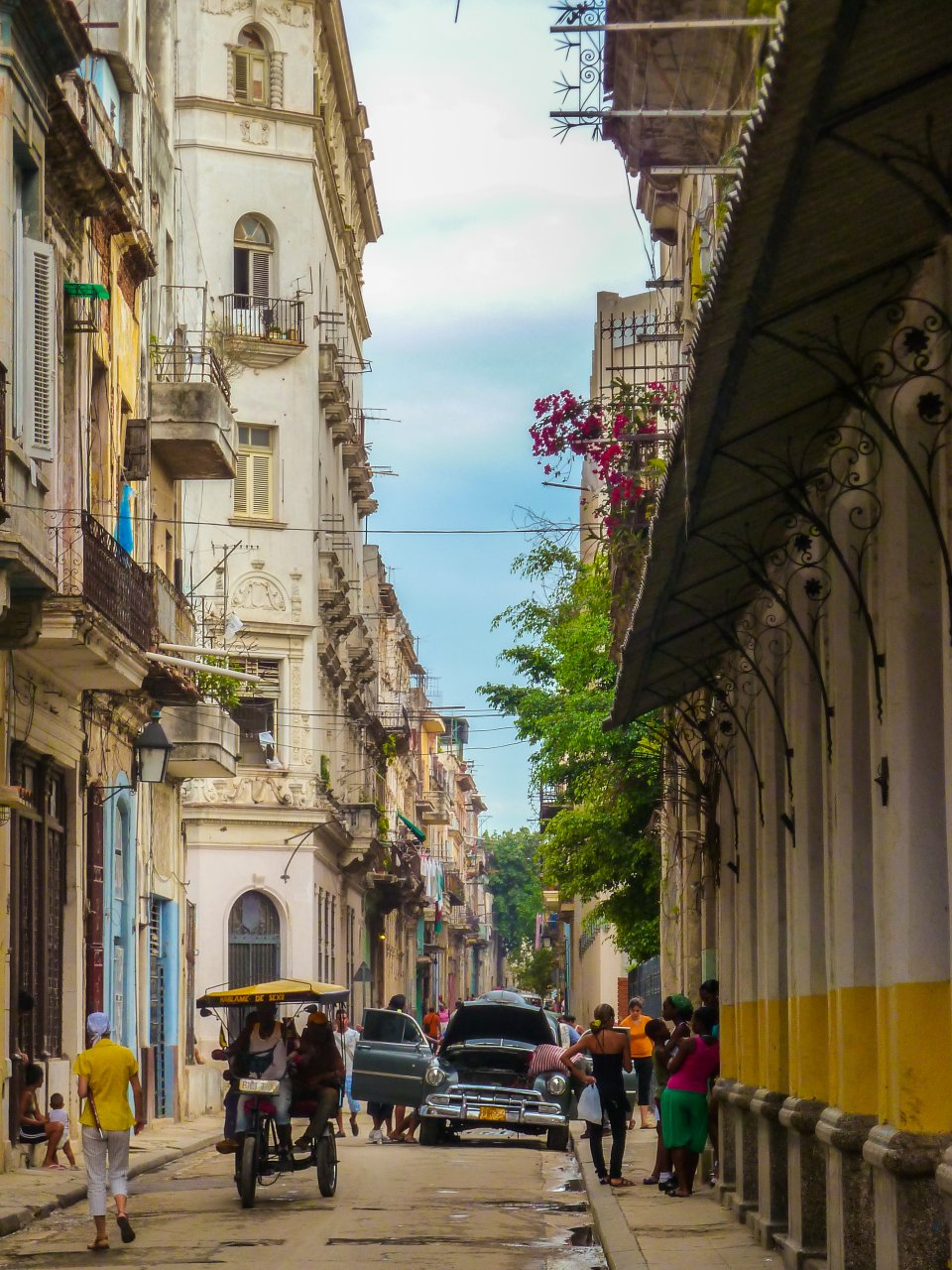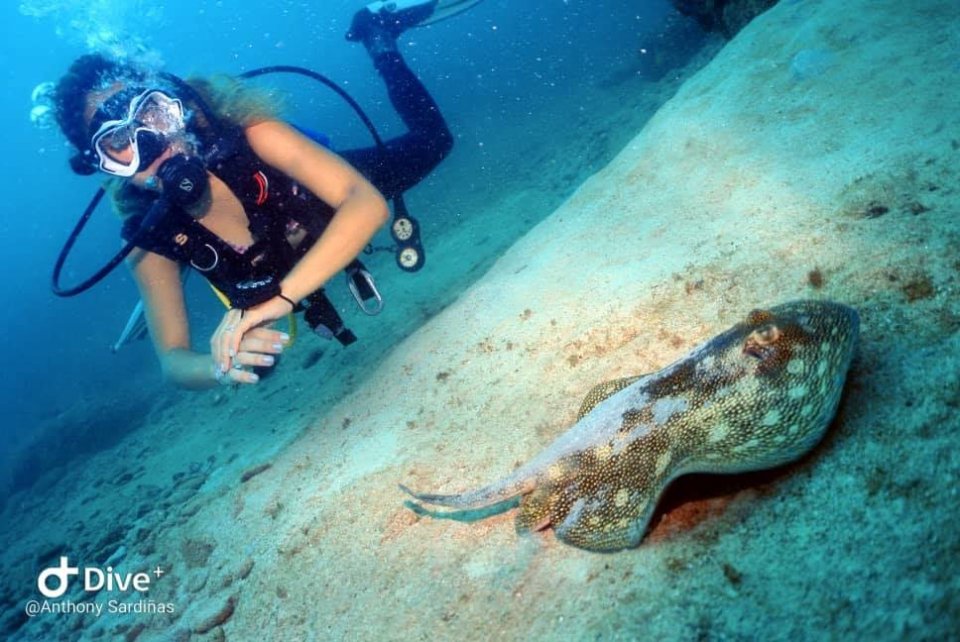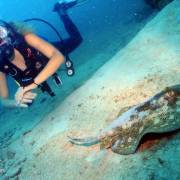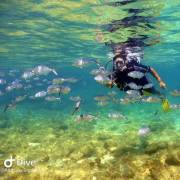Dive in Havana
Diving in Havana
When people talk about the city of Havana, it's not usually about the scuba diving but there really is some great sites off the coastline and if you have a few days in the city you might want to check them out.
There are a couple of centres in central Havana, one is Caimito, Jibacoa and Havana Playas del Este. From Cojimar in east Havana to Mariel Bay in the west there are about 24 sites and an extra 10 in the Beaches of the East area. Average depth is from 5-35 metres and you can explore small caves, wrecks and reefs covered in corals, sponges and an abundance of tropical fish.
Advanced wreck divers will love the oppotunities here, Coral Island is a merchant ship now covered in life and home to various fish species. Sanchez Barcastegui is an old Spanish vessel that sunk in 1985 with some big fish hanging around the remains such as tarpons, groupers and snooks. Comodoro is a fishing boat that was sunk for an artificial reef so it's still in great condition with lots of sea life surrounding it.
Deep divers will enjoy the Baracoa Umbrellas and the great coral formations there or head to Hollywood Song wall to discover the caves and tunnels. El Muerto is a site that has become famous since a small boy drowned there, the family sunk an angel pantheon which people come to see.
The best dive in Havana would have to be the Boca de Caldera (Mouth of the Cauldron), a shallow dive with great visibility where you can explore coral gardens, small caves and a ton of fish while cruising along the wall here.
So how do you rate the diving off the coast of Havana? Be sure to drop us a line about your favourite spots and anything interesting you might have discovered.
(By Kelly Luckman)
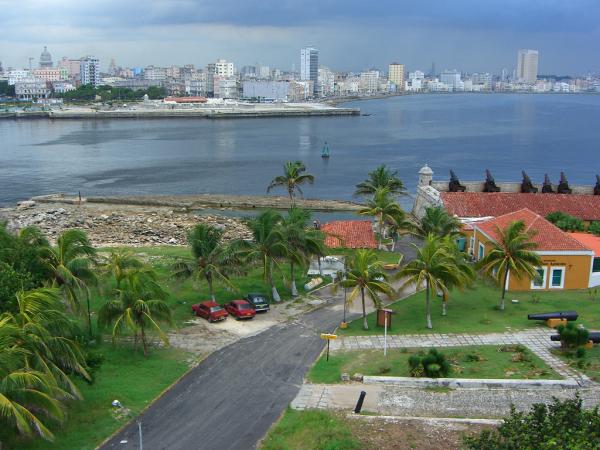
Travel to Havana
The buzzing capital city of Cuba, Havana has so many different sides to it that whatever experience you might be looking for, you'll find right here. Sitting pretty on the crystal waters of the Caribbean, soaked in a rich history of revolution, there's beauty and excitement everywhere you look. The Habaneros are passionate about their city and homeland and are more than happy to show you their favourite part of their world.
The Jose Marti International Airport is the gateway to Cuba with many international and domestic flights. There are no flights from the USA due to the tension between the countries but you can easily find a charter flight from there, usually as a package deal. It's very cheap to get there from Mexico so you might consider flying from there. The UK, Europe, Canada, Central and South America all have direct flights to Cuba. Buses and trains service the country and short domestic flights are an easy way to get around the country. Taxis are everywhere and an easy way to get around town but be sure to negotiate your price before you get in. Walk or hire a bicycle to see the sites.
There are some nice hotels in Cuba but to really get a taste of how people live, you might consider the homestay or guesthouse option. You can find a bed for $10 and a room for $20, they'll be clean and comfortable and to stay with a local person is a great way to get insider knowledge about the city. Hotels in the city centres are about $100 a night for a nice room or you can find one for $20 but you get what you pay for. Check reviews of the place before you stay there.
The city is separated into a few sections: Old Havana with all its old buildings, Central Havana's residnetial area and cigar factory, Havana Vedado along the waterfront and Havana Mirimar for the upscale shopping and more wealthy style of living. You can spend days wandering around the city looking at the sites, strolling along the Malecón with lovely bay views, the Prado's street life and cafes or the John Lennon Park in Vedado, which is the only western music icon featured in Havana.
The Museum of the Revolution and Capitol Building are a good start to learn about the history of Cuba. Start early at the Plaza of Revolution to avoid the crowds and heat and end up in the elegant Plaza de Armas, the most beautiful square in the city. The Catedral de San Cristobal is the only asymmetrical baroque construction known to exists and Castillo de la Real Fureza with its maritime museum.
Cuba is famous for its rum and cigars so a visit to the Partagas Cigar Factory where you can tour the factory and purchase REAL Cuban Cigars (the ones on the street are not real but still good quality) and Havana Club Rum Factory to sample the country's finest export. Chilling out in one of the local bar sipping a mojito and listening to Cuban music will be the great end to your day's adventures.
Be careful on the streets in the centre at night as muggings can occur but Havana is quite a safe city and if you are walking at night, always take the streets that are well lit and have a lot of people. You may get hassled by people trying to offer you a tour of the city or show you where to eat, they will expect a tip so best way to avoid them is to keep walking and not take them up on the offer.
You'll enjoy the diversity of Havana and the exciting things to discover around every corner. You'll feel like you've stepped back in time, even the cars are old classics! A very different city with a lot to offer the interested traveller.
(By Kelly Luckman)

